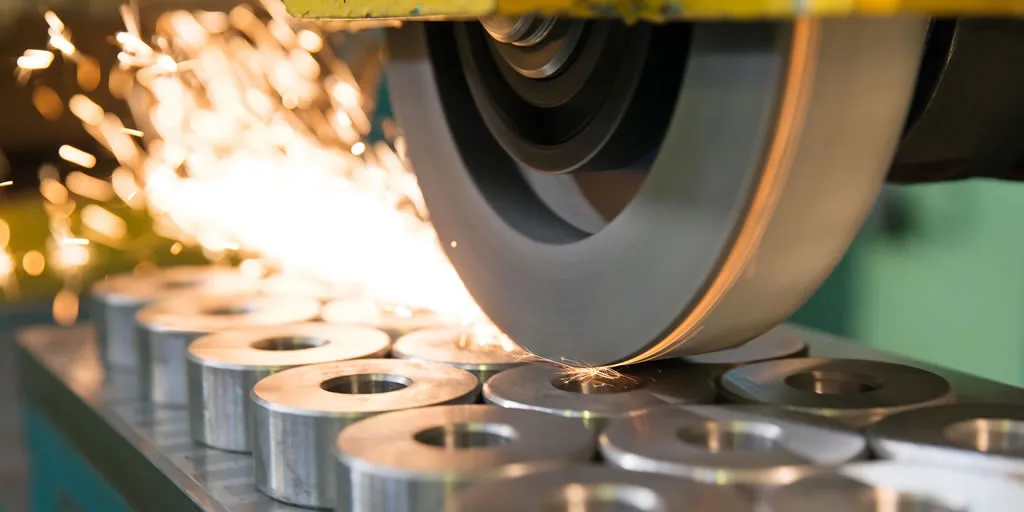Precision Grinding: What It Is and Why It’s Important
Precision grinding is a process that involves carefully shaping and finishing a material to achieve precise dimensions and a smooth surface finish.
It is a crucial step in the manufacturing process of many products, as it helps to ensure that the final product meets the required specifications and tolerances.
In this article, we’ll take a closer look at what precision grinding is, the benefits it offers, and the different types of precision grinding techniques that are used.
Table of Contents
What is Precision Grinding?
Precision grinding is a machining process that involves the use of abrasive tools to remove small amounts of material from a workpiece.
It is a highly accurate process that produces parts with tight tolerances and a smooth surface finish. Precision grinding can be performed on a variety of materials, including metals, plastics, and ceramics.
Types of Precision Grinding
There are several different types of precision grinding, including surface grinding, cylindrical grinding, and centerless grinding. Each of these methods is used to achieve specific goals and produce specific results.
For example, surface grinding is often used to produce a flat, smooth surface on a workpiece, while cylindrical grinding is used to produce precise cylindrical shapes and tolerances.
There are several types of precision grinding, including:
Surface grinding
This process involves using a rotating abrasive wheel to remove material from the surface of a workpiece. It is often used to produce a flat, smooth surface on a workpiece and is often used to prepare a surface for further machining or coating.
Cylindrical grinding
This process involves grinding the external or internal surface of a cylindrical workpiece. It is used to produce precise cylindrical shapes and tolerances and is often used to grind the surfaces of machine parts and tools.
Centerless grinding
This process involves grinding the surface of a workpiece without the use of a spindle. It is a highly efficient process that can produce parts with tight tolerances and a smooth surface finish.
Creep feed grinding
This is a high-production process that involves grinding deep, wide cuts in a workpiece. It is often used to produce intricate shapes and profiles and is typically used for grinding large or complex parts.
Tool and cutter grinding
This process involves grinding the cutting surfaces of tools and cutter, such as milling cutters and drill bits. It is often used to produce custom tools and cutter for specific applications.
Internal grinding
This process involves grinding the internal surface of a workpiece, such as the bore of a tube or the inside of a bearing. It is often used to produce precise dimensions and smooth finishes on the internal surfaces of parts.
Form grinding
This process involves grinding a workpiece in a specific shape or form, such as a gear tooth or cam profile. It is often used to produce custom shapes and profiles on a workpiece.
Precision Grinding of Parts
Precision grinding is a manufacturing process that involves the use of abrasive tools to remove material from a workpiece to achieve a high level of accuracy in the final product. It is typically used for high-precision parts, such as those used in the aerospace, medical, and electronic industries.
The process can involve several different types of grinding, including surface grinding, cylindrical grinding, and centerless grinding, and is often performed on specialized grinding machines. Precision grinding can produce parts with tight tolerances, smooth finishes, and high surface quality.
Benefits of Precision Grinding
Precision grinding offers a number of benefits, both for the manufacturer and the end user of the finished product. Some of the main advantages of precision grinding include:
High accuracy and tight tolerances
Precision grinding allows for the production of parts with very tight dimensional tolerances, which is important in many industries where even small variations can have significant impacts.
Smooth surface finish
Precision grinding produces a smooth, flawless surface finish on the workpiece, which is often important for the functionality and appearance of the finished product.
Increased durability
Parts that have been precision ground are often stronger and more durable than those that have not, as the grinding process removes any imperfections or defects that could weaken the material.
Increased efficiency
Precision grinding can help to increase the efficiency of a manufacturing process by reducing the need for rework or additional machining steps.
Precision grinding is an important process in the manufacturing industry, as it helps to produce parts with tight tolerances and a smooth surface finish.

